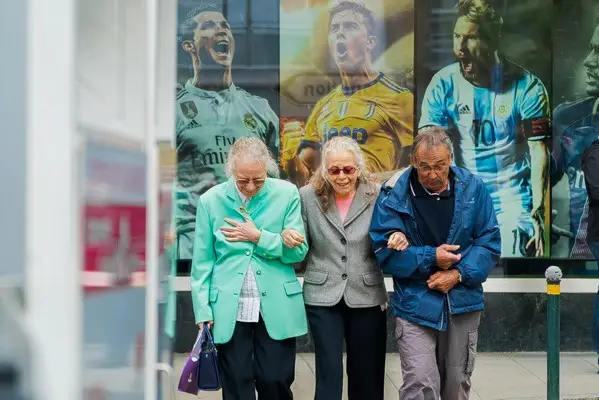Table of Contents
- Introduction
- Life Expectancy as a Social Phenomenon
- Understanding Social Networks
- Mechanisms Linking Social Networks to Longevity
- Variations in Social Networks and Longevity
- Case Studies in Social Networks and Longevity
- The Risks of Social Isolation
- The Role of Technology and Digital Networks
- Policy Implications and Interventions
- Conclusion
Introduction
Life expectancy is shaped by far more than genetics and medical care. Increasingly, sociologists have emphasized that the structure of our social networks—the ties we maintain with friends, family, colleagues, and communities—plays a decisive role in shaping how long and how well we live. Longevity is not only a biological achievement but also a profoundly social phenomenon. Relationships provide emotional support, foster healthier behaviors, and generate meaning, thereby creating conditions for longer lives.
This article explores the sociological dimensions of life expectancy through the lens of social networks, examining how different forms of social relationships affect health and longevity. It is designed to guide undergraduate students in understanding the complex interconnections between social ties and life outcomes, while also drawing attention to how structural inequalities shape these dynamics.
Life Expectancy as a Social Phenomenon
Life expectancy is often thought of as an outcome of medicine, lifestyle choices, and genetic predisposition. Yet, sociology teaches us that these factors are always mediated by social context. For example:
- Access to healthcare depends on social class and insurance systems.
- Diet and exercise are shaped by cultural norms and peer influence.
- Stress and coping mechanisms are heavily affected by support networks.
In this sense, life expectancy is not simply an individual characteristic but a social outcome. Societies with stronger communal bonds often display higher longevity, while those marked by isolation and fragmentation see higher mortality rates. The sociological lens makes it clear that we must understand health not as a purely private concern but as a collective outcome produced by shared norms, institutions, and networks.
Understanding Social Networks
What Are Social Networks?
In sociology, social networks refer to the web of social relationships that connect individuals. These ties can be strong (close friends and family) or weak (acquaintances, colleagues, neighbors). Both types of connections contribute differently to wellbeing and life expectancy.
Strong vs. Weak Ties
- Strong ties provide emotional intimacy, material support, and direct care in times of need. They represent close-knit forms of solidarity that buffer against life’s challenges.
- Weak ties expand opportunities, provide access to new information, and connect individuals to broader resources. They serve as bridges to different social circles and new possibilities.
Together, they form a layered social safety net. A healthy balance of both strengthens resilience and promotes longevity. This dynamic balance helps explain why individuals embedded in diverse networks often live longer, healthier lives.
Mechanisms Linking Social Networks to Longevity
Emotional Support and Stress Reduction
One of the strongest predictors of health is the presence of supportive relationships. Emotional support lowers stress, which is linked to cardiovascular disease, immune system suppression, and mental illness. Individuals embedded in networks of care experience lower levels of chronic stress and recover more quickly from illness. Stress is not only a biological process but also a social one, shaped by feelings of security and belonging.
Behavioral Regulation and Healthy Norms
Social networks act as regulators of behavior. When peers encourage exercise, healthy eating, or abstinence from smoking, individuals are more likely to adopt these habits. Conversely, networks can also perpetuate harmful norms, such as heavy drinking or sedentary lifestyles, demonstrating that longevity is closely tied to the quality of one’s social environment. The power of group influence highlights how social life can either protect or undermine long-term health.
Meaning and Identity
Relationships give meaning to life. Family, friendship, and community foster a sense of belonging and purpose, which is strongly correlated with longer life expectancy. Individuals who feel socially isolated often experience higher rates of depression and suicide, which directly reduce longevity. Meaning-making is a deeply social process, and a life rich with connection tends to be a life more willingly sustained.
Access to Resources
Networks provide access to resources such as financial assistance, job opportunities, medical information, and caregiving. This resource dimension shows how social ties reduce vulnerability during life crises and improve overall resilience. It also demonstrates the interconnectedness of economic, cultural, and social capital in shaping life outcomes.
Social Capital and Collective Efficacy
Beyond individual ties, communities with strong norms of reciprocity and trust (often described as social capital) display better health outcomes overall. Neighborhoods that encourage collective support—where residents look out for each other—contribute to safer, healthier, and longer lives.
Variations in Social Networks and Longevity
Get the full article AD FREE. Join now for full access to all premium articles.
View Plans & Subscribe Already a member? Log in.





